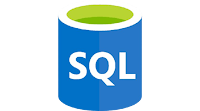🎀Introduction To SQL
1️⃣. What is SQL
2️⃣. Basic SQL Commands ?
3️⃣. SQL v/s NoSQL
4️⃣. Types of SQL Commands
5️⃣. What is Database
1️⃣. What is SQL
SQL (Structured Query Language) is a standardized programming language used to manage and manipulate relational databases.
It allows you to interact with a database.
What You Can Do with SQL ?
💎Create databases and tables
💎Insert data into tables
💎Read/retrieve data (using SELECT)
💎Update existing data
💎Delete records
💎Control access to data (permissions)
💎Set constraints to maintain data accuracy
2️⃣. Basic SQL Commands
🗃 Command | 📇 Purpose
💎SELECT : Retrieve data
💎INSERT : Add new data
💎UPDATE : Modify data
💎DELETE : Remove data
💎CREATE : Create table or database
💎DROP : Delete table or database
3️⃣. SQL v/s NoSQL
⚔️ SQL vs NoSQL
Feature | 🗃️ SQL (Relational) | 📦 NoSQL (Non-relational)
(1.) Data Structure | Tables (rows and columns) | Varies: Documents, Key-Value, Graph, Column
(2.) Schema (Structure) | Fixed schema (predefined) | Flexible schema (dynamic fields)
(3.) Scalability | Vertical (scale up – bigger server) | Horizontal (scale out – more servers)
(4.) Query Language | SQL (Structured Query Language) | Various (e.g., JSON queries, key lookups)
(5.) performance | Low performance with huge volumes of data | Easily work with huge volumes of data
Examples | MySQL, PostgreSQL, Oracle, SQL Server | MongoDB, Cassandra, Firebase, Redis.
🧠 When to Use SQL ?
✅ Choose SQL when:
⚉ Your data is structured (like Excel tables).
⚉ You need complex queries (e.g., joins, filters).
⚉ You require strong consistency and data integrity.
☞ Example: Banking systems, HR systems, ERPs.
🚀 When to Use NoSQL ?
✅ Choose NoSQL when:
⚉ Your data is unstructured or semi-structured (JSON, logs, media)
⚉ You need to scale quickly and handle big data or traffic.
⚉ You want flexibility — schema changes frequently.
☞ Example: Social media apps, real-time analytics, IoT, chat apps.
🔧 Real-World Analogy
SQL = Rigid office form: same structure every time.
NoSQL = Free-form diary: different fields on each page.
4️⃣. Types of SQL Commands
✅ They are main types of SQL commands
🎴 1. DDL (Data Definition Language)
Used to define and change the structure of tables and databases (Create, Alter, Drop & Truncate)
🎴 2. DML (Data Manipulation Language)
Used to manage data inside the tables (Insert, Update and Delete)
🎴 3. DCL (Data Control Language)
Used to control access to data or permissions to users (Grant and Revoke)
🎴 4. DQL (Data Query Language)
Used to fetch data from a database ( SELECT )
5️⃣. What is Database
A database is an organized collection of data that is stored and accessed electronically.
It allows you to store, manage, retrieve, and manipulate data easily and efficiently.
OR
A database is like a smart digital notebook where data is stored in an organized way and can be easily managed using SQL or other tools.
✅ Key Features of a Database :
📁 Organized: Data is stored in structured formats (like tables)
🔎 Searchable: You can quickly retrieve information.
🛡️ Secure: Access can be restricted to certain users.
♻️ Modifiable: You can update, delete, or insert data.
🔗 Relational: Data in one table can be linked to data in another (in relational databases).
✅ Popular SQL Database Systems
Database Name | Description
MySQL : Open-source, widely used
PostgreSQL : Advanced features, open-source
SQLite : Lightweight, file-based
Oracle : Enterprise-grade
SQL Server : Developed by Microsoft





No comments:
Post a Comment